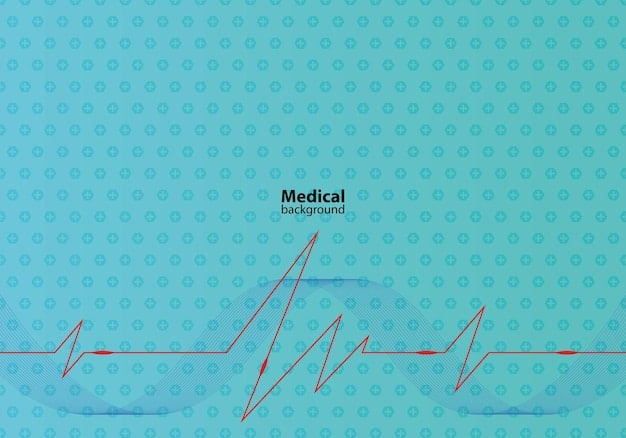ACA Subsidies 2025: Key Changes & What They Mean for You

Anúncios
Navigating the evolving landscape of healthcare means understanding the upcoming shifts in Affordable Care Act (ACA) subsidies for 2025, which are poised to impact millions of Americans seeking affordable health coverage.
Anúncios
Understanding what are the key changes to the Affordable Care Act (ACA) subsidies in 2025 is crucial for millions of Americans who rely on these financial aids to access health insurance. As the healthcare landscape continues to evolve, staying informed about policy adjustments can significantly impact your potential savings and coverage options.
Understanding the Current ACA Subsidy Framework
The Affordable Care Act, often referred to as Obamacare, was enacted in 2010 to expand health insurance coverage to uninsured Americans. A core component of the ACA’s design involves financial assistance, primarily through premium tax credits (subsidies), which help eligible individuals and families afford monthly health insurance premiums bought through the Health Insurance Marketplace. These subsidies are crucial in making healthcare accessible by reducing the financial burden on low and middle-income households.
Before any changes, the ACA’s original subsidy structure limited eligibility. Households with incomes between 100% and 400% of the federal poverty level (FPL) were eligible for assistance, with premium contributions capped at a certain percentage of their income. This framework aimed to ensure that people could find coverage without spending an undue portion of their earnings on premiums. However, for those earning slightly above 400% FPL, often referred to as the “subsidy cliff,” federal assistance was entirely cut off, leading to significantly higher out-of-pocket costs.
Anúncios
Impact of the American Rescue Plan Act (ARPA)
The landscape of ACA subsidies underwent a significant transformation with the passage of the American Rescue Plan Act (ARPA) in 2021. This legislation introduced temporary but substantial enhancements to existing subsidies, making health coverage more affordable for a broader range of Americans. The ARPA effectively eliminated the “subsidy cliff,” extending eligibility for premium tax credits to individuals and families at all income levels, provided their premium contributions exceeded 8.5% of their household income.
The ARPA enhancements also increased the amount of financial assistance for those already eligible, lowering their net premium costs. For instance, individuals below 150% of the FPL could enroll in silver plans with zero-dollar premiums after subsidies. This expansion dramatically reduced the cost of health insurance for millions and led to a surge in Marketplace enrollments, demonstrating the direct impact of robust financial aid on health insurance access.
- Expanded eligibility for premium tax credits beyond 400% FPL.
- Reduced the percentage of income individuals had to pay for premiums.
- Made health insurance more affordable for low-income households.
- Contributed to record-high enrollment numbers in the ACA Marketplace.
The ARPA enhancements were initially set to expire at the end of 2022, creating uncertainty about the future of affordable healthcare. However, subsequent legislative action, specifically the Inflation Reduction Act of 2022, extended these benefits, ensuring their continuation through 2025. This extension provided much-needed stability for enrollees and the healthcare market, preventing a potential increase in premiums for millions of Americans.
The Inflation Reduction Act’s Role: Extending Affordability
The Inflation Reduction Act (IRA) of 2022 marked a pivotal moment for the Affordable Care Act, securing the subsidy enhancements initially introduced by the American Rescue Plan Act. When ARPA’s enhanced subsidies were set to expire at the end of 2022, there was considerable concern about a potential “subsidy cliff,” where millions of Americans would face substantial premium increases or lose their eligibility for financial assistance altogether. The IRA stepped in to prevent this, extending the enhanced subsidies through the end of 2025.
This extension means that, for 2025, the same generous subsidy structure that has been in place since ARPA will continue. This includes the elimination of the 400% FPL income cap for subsidy eligibility, ensuring that no one pays more than 8.5% of their household income for the benchmark silver plan. For lower-income individuals and families, the subsidies remain even more substantial, effectively reducing their premium contributions to minimal or even zero amounts. The IRA’s intervention provided crucial stability and predictability for the health insurance market and consumers.
Key Provisions of the Extended Subsidies
The extension of ACA subsidies under the Inflation Reduction Act reaffirms several key provisions designed to maximize affordability and access:
- No Income Cap: The most significant change continued by the IRA is the removal of the income cap for subsidy eligibility. Previously, individuals earning over 400% of the federal poverty level were ineligible for premium tax credits. The IRA ensures that even those with higher incomes can receive subsidies if their benchmark plan premiums exceed 8.5% of their household income.
- Lower Premium Contributions: The percentage of household income that individuals are expected to contribute towards their premiums remains significantly lower than pre-ARPA levels. This directly translates to lower monthly costs for enrollees, making health insurance more attainable across various income brackets.
- Enhanced Support for Lower Incomes: For individuals and families with incomes below 150% of the FPL, the subsidies continue to be exceptionally generous. Many eligible individuals in this income group can qualify for a benchmark silver plan with a $0 monthly premium, effectively removing a major financial barrier to coverage.
These provisions ensure that the ACA’s goal of expanding access to affordable health insurance remains robust for 2025. The stability provided by the IRA allows individuals and families to plan their healthcare budgets with greater certainty, knowing that financial assistance will continue to be available to help offset rising healthcare costs.
What Happens After 2025? The Looming Sunset of Enhanced Subsidies
While the Inflation Reduction Act has extended the vital ACA subsidy enhancements through 2025, it’s crucial to understand that this extension is not permanent. Barring further legislative action, these enhancements are scheduled to expire at the end of 2025. This prospective expiration creates a significant point of concern for millions of Americans who currently benefit from reduced healthcare premiums, potentially leading to a return to higher costs and, for some, the reintroduction of the “subsidy cliff.”
The expiration of the enhanced subsidies would revert the ACA’s financial assistance structure to its pre-ARPA state. This means that the income cap for eligibility (400% of the Federal Poverty Level) would be reinstated, cutting off financial aid for many middle-income households. Additionally, the maximum percentage of income that individuals are expected to pay towards their premiums would increase across all income levels, potentially making health insurance unaffordable for many, even those who remain subsidy-eligible.

Potential Impacts of Subsidy Expiration
The potential sunset of enhanced subsidies after 2025 carries several significant implications that could reshape the health insurance landscape:
- Return of the “Subsidy Cliff”: This is arguably the most impactful change. Individuals and families earning just above 400% of the FPL would once again face a sudden loss of all premium assistance, resulting in very expensive health insurance plans. This disincentivizes work and income growth for those near the cap.
- Increased Premiums for Millions: Even for those who remain eligible for subsidies under the old rules, their out-of-pocket premium contributions would increase. This would directly raise healthcare costs for low and middle-income families, potentially straining household budgets.
- Reduced Enrollment and Increased Uninsured Rates: Higher costs often lead to decreased enrollment. If premiums become unaffordable for a significant portion of the population, it is plausible that more people will choose to go uninsured, reversing some of the progress made under the ACA over the past decade.
- Economic Strain: Increased healthcare costs for individuals could lead to broader economic impacts, as disposable income decreases and families face tougher financial choices between healthcare and other necessities.
These potential impacts highlight the critical need for ongoing policy discussions and public awareness regarding the future of ACA subsidies. The outcome of these discussions will largely determine the affordability and accessibility of health insurance for millions of Americans beyond 2025.
Eligibility Criteria in 2025: Who Qualifies and How?
For 2025, the eligibility criteria for ACA subsidies largely mirror those in effect under the American Rescue Plan Act and the Inflation Reduction Act. This means that a broad spectrum of Americans will continue to qualify for financial assistance, making health insurance more affordable. Eligibility for premium tax credits (subsidies) primarily hinges on your household income, household size, and the affordability of employer-sponsored coverage.
To qualify, your household income must typically fall within certain percentages of the Federal Poverty Level (FPL). However, due to the extended enhancements, the traditional 400% FPL income cap has been temporarily removed. This means that if the cost of the benchmark silver plan in your area exceeds 8.5% of your household income, you may be eligible for a subsidy, regardless of how far above the 400% FPL your income is. This is a significant change compared to the pre-ARPA rules, which often left middle-income families struggling to afford coverage.
Calculating Your Potential Subsidy
Calculating your potential ACA subsidy involves several factors, but the process is designed to be relatively straightforward through the Health Insurance Marketplace. Here’s a breakdown:
- Household Income: This is generally your Modified Adjusted Gross Income (MAGI) for your tax household. The Marketplace will ask for your estimated income for the coverage year (2025). Accuracy here is key, as significant changes in income can impact your eligibility and the amount of your subsidy.
- Household Size: The number of people in your tax household also plays a crucial role, as the Federal Poverty Levels vary based on household size. A larger household generally has a higher FPL threshold, potentially increasing subsidy eligibility.
- Benchmark Silver Plan Cost: The subsidy amount is primarily determined by the cost of the second-lowest cost silver plan available in your area. This benchmark plan serves as the reference point against which your income contribution is measured. Your subsidy will cover the difference between your income contribution limit and the benchmark plan’s premium.
The Marketplace calculators and enrollment assistance programs are equipped to help you navigate these calculations. It’s important to report any significant changes in income or household size throughout the year, as this can affect your subsidy amount and potentially lead to owing money back or receiving a larger credit at tax time.
Navigating the Marketplace: Tips for 2025 Enrollment
Enrolling in health insurance through the Affordable Care Act (ACA) Marketplace for 2025 requires careful consideration and strategic planning to maximize subsidies and secure suitable coverage. Open Enrollment is the primary period for most individuals to sign up, renew, or change their health plans. This period typically begins in November and runs through late December or early January, though specific dates can vary slightly each year.
The Marketplace offers various plans categorized by “metal levels” (Bronze, Silver, Gold, Platinum), each offering different levels of coverage and cost-sharing. Bronze plans have lower premiums and higher out-of-pocket costs, while Platinum plans have higher premiums and lower out-of-pocket costs. Silver plans are particularly important because they are the only plans eligible for “cost-sharing reductions” (CSRs), which lower deductibles, co-payments, and out-of-pocket maximums for eligible low-income individuals, in addition to premium tax credits.
Strategic Enrollment Tips for 2025
To effectively navigate the Marketplace and make the best choices for your healthcare needs in 2025, consider the following:
- Estimate Your Income Accurately: Your subsidy eligibility and amount are directly tied to your estimated household income for 2025. Be as precise as possible, factoring in any expected changes in employment or income sources. Updating your income throughout the year is crucial to avoid discrepancies at tax time.
- Compare Plans exhaustively: Don’t just focus on premiums. Look at deductibles, co-pays, co-insurance, and out-of-pocket maximums. Consider your anticipated healthcare needs for the year. A slightly higher premium might result in lower overall costs if you expect to use a lot of medical services.
- Understand Silver Plans and CSRs: If you qualify for subsidies and your income is below 250% of the FPL, a Silver plan might offer the best value due to cost-sharing reductions. These reduce the amount you pay for care when you use it, making healthcare even more affordable.
- Utilize Enrollment Assistance: The Marketplace provides free, unbiased assistance from navigators, agents, and brokers. These professionals can help you understand your options, determine eligibility, and complete the application process. Their expertise can be invaluable, especially if your situation is complex.
- Check Your Prescriptions and Doctors: Before finalizing a plan, ensure that your preferred doctors are in the plan’s network and that your necessary prescriptions are covered on the plan’s formulary. Out-of-network care or uncovered medications can lead to significant unexpected costs.
By taking a proactive and informed approach to 2025 enrollment, you can optimize your health insurance coverage, leverage available subsidies, and ensure your healthcare needs are met affordably.
Future Legislative Outlook: Beyond 2025
The current extension of enhanced ACA subsidies through the Inflation Reduction Act provides financial relief until the end of 2025. However, the period beyond that remains uncertain, as further legislative action will be required to extend these benefits permanently or temporarily. The future of these subsidies is a recurring subject of debate in Washington, with various stakeholders holding differing views on their necessity and sustainability.
Policymakers, healthcare advocates, and economists recognize the significant impact of these subsidies on reducing the uninsured rate and improving health outcomes. Proponents argue that making the subsidies permanent is essential for the long-term stability of the health insurance market and for ensuring that healthcare remains affordable for millions of Americans. They often point to the success of the enhanced subsidies in boosting enrollment and reducing healthcare inequalities.
Conversely, concerns about the long-term cost of extending these subsidies permanently are often raised. Critics and some policymakers may seek alternatives or adjustments to the current structure, focusing on fiscal responsibility or different approaches to increasing healthcare access. The political landscape, including upcoming elections, will significantly influence these debates and ultimately determine the trajectory of ACA subsidies post-2025.
Advocacy and Policy Debates
The discussions surrounding the future of ACA subsidies involve a wide array of advocacy groups, think tanks, and legislative bodies. Key debates typically center on:
- Permanence vs. Temporary Extensions: Should the enhanced subsidies be made a permanent fixture of the ACA, or should they continue to be debated and extended on a temporary basis? Permanence would provide greater stability for both consumers and insurers.
- Cost and Funding Mechanisms: How will the continued cost of these subsidies be funded? Various proposals range from new taxes to reallocating existing federal spending. The financial implications are a major point of contention.
- Targeting of Subsidies: Are the current subsidy formulas optimally targeted? Some discussions may explore whether the distribution of financial aid could be refined to better serve those with the most significant need, or to address specific healthcare market inefficiencies.
- Impact on Competition and Market Stability: What effect do the subsidies have on the overall health insurance market? Proponents argue they stabilize the market by bringing more healthy individuals into the risk pool, while critics may raise concerns about competition.
The outcome of these policy debates will directly shape the affordability of health insurance for millions of Americans in the years to come. Remaining engaged and informed about these discussions will be crucial for anyone affected by the ACA and its subsidies.
Beyond Subsidies: Other ACA Provisions to Monitor
While ACA subsidies are a critical component for many Americans, the Affordable Care Act encompasses a much broader array of provisions that safeguard and expand access to healthcare. As discussions about subsidies evolve, it’s essential to remember these foundational elements that will continue to shape the U.S. healthcare system, regardless of the specific fate of the enhanced premium tax credits.
One of the most consequential provisions is the requirement for health plans to cover essential health benefits. These include categories such as ambulatory patient services, emergency services, hospitalization, maternity and newborn care, mental health and substance use disorder services, prescription drugs, rehabilitative and habilitative services and devices, laboratory services, preventive and wellness services, and chronic disease management, and pediatric services, including oral and vision care. This ensures that comprehensive coverage is available, preventing plans from offering bare-bones insurance that leaves consumers vulnerable. The continued enforcement of these minimum standards is vital for consumer protection and ensuring quality care.

Key Protections and Regulations
Several other significant ACA provisions continue to provide fundamental protections and shape the healthcare market:
- Pre-existing Conditions: A cornerstone of the ACA is the prohibition against insurance companies denying coverage or charging more based on pre-existing health conditions. This protection has been life-changing for millions who previously struggled to obtain affordable insurance. This remains a non-negotiable aspect of the law.
- Dependent Coverage until Age 26: The ACA allows young adults to remain on their parents’ health insurance plans until they turn 26, providing crucial coverage during a transitional period in their lives. This provision significantly reduces the uninsured rate among young adults.
- Preventive Care Without Cost-Sharing: Most health plans must cover certain preventive services—like immunizations, screenings for various diseases, and well-woman visits—without charging a co-payment, co-insurance, or deductible. This encourages early detection and proactive health management, leading to better outcomes.
- Out-of-Pocket Maximums: All non-grandfathered plans must adhere to an annual limit on out-of-pocket spending for essential health benefits. Once this maximum is reached, the plan pays 100% of covered services for the rest of the plan year. This protection shields consumers from catastrophic medical bills.
- Medical Loss Ratio (MLR): The ACA requires insurance companies to spend a minimum percentage (typically 80-85%) of premium revenue on medical care and quality improvements, rather than administrative costs or profits. If they fall short, they must issue rebates to policyholders, promoting efficiency and accountability.
These enduring provisions underscore that the ACA is more than just subsidies; it’s a comprehensive framework designed to improve access, consumer protections, and the overall quality of healthcare in the United States. Monitoring their continued enforcement and potential adjustments is just as important as tracking changes to financial assistance programs.
| Key Aspect | Brief Description |
|---|---|
| 📊 Extended Subsidies | Enhanced ACA subsidies from the Inflation Reduction Act are extended through 2025. |
| 🚫 No Income Cap | The 400% FPL income cap for eligibility remains suspended for 2025. |
| 💰 Lower Premiums | Individuals pay no more than 8.5% of income for a benchmark silver plan. |
| 🗓️ 2026 Uncertainty | Enhanced subsidies are set to expire after 2025 without further legislative action. |
Frequently Asked Questions About ACA Subsidies in 2025
Yes, enhanced ACA subsidies, originally introduced by the American Rescue Plan Act and extended by the Inflation Reduction Act, are still available for 2025. This means eligible individuals and families can continue to receive significant financial assistance to help reduce their monthly health insurance premiums bought through the Marketplace.
No, the traditional 400% Federal Poverty Level (FPL) income cap for ACA subsidy eligibility will not return in 2025. The Inflation Reduction Act extended the provision that eliminates this cap, ensuring that no one pays more than 8.5% of their household income for the benchmark silver plan, regardless of their income level.
Qualification for ACA subsidies in 2025 primarily depends on your household income and size. You must generally purchase your health plan through the Health Insurance Marketplace and not have access to affordable, employer-sponsored coverage. Your premium contribution will be capped as a percentage of your income.
Unless further legislative action is taken, the enhanced ACA subsidies are scheduled to expire at the end of 2025. This would revert the subsidy structure to pre-American Rescue Plan Act rules, potentially reintroducing the 400% FPL income cap and increasing premium contributions for many enrollees.
Yes, many individuals and families with lower incomes (typically below 150% of the Federal Poverty Level) may still qualify for a $0 monthly premium benchmark silver plan in 2025, thanks to the continued enhanced subsidies. Eligibility varies based on specific income, household size, and local plan costs.
Conclusion
The landscape of ACA subsidies in 2025 reflects a continued commitment to making health insurance accessible and affordable for Americans. The extension of enhanced subsidies through the Inflation Reduction Act provides crucial financial relief, eliminating the “subsidy cliff” and ensuring that premium contributions remain manageable for millions. However, the temporary nature of these enhancements underscores the ongoing legislative debates and the importance of staying informed beyond 2025. As individuals navigate the Health Insurance Marketplace, understanding eligibility, accurately estimating income, and comparing plans will be vital to leveraging these key changes effectively and ensuring continuous, affordable coverage.





